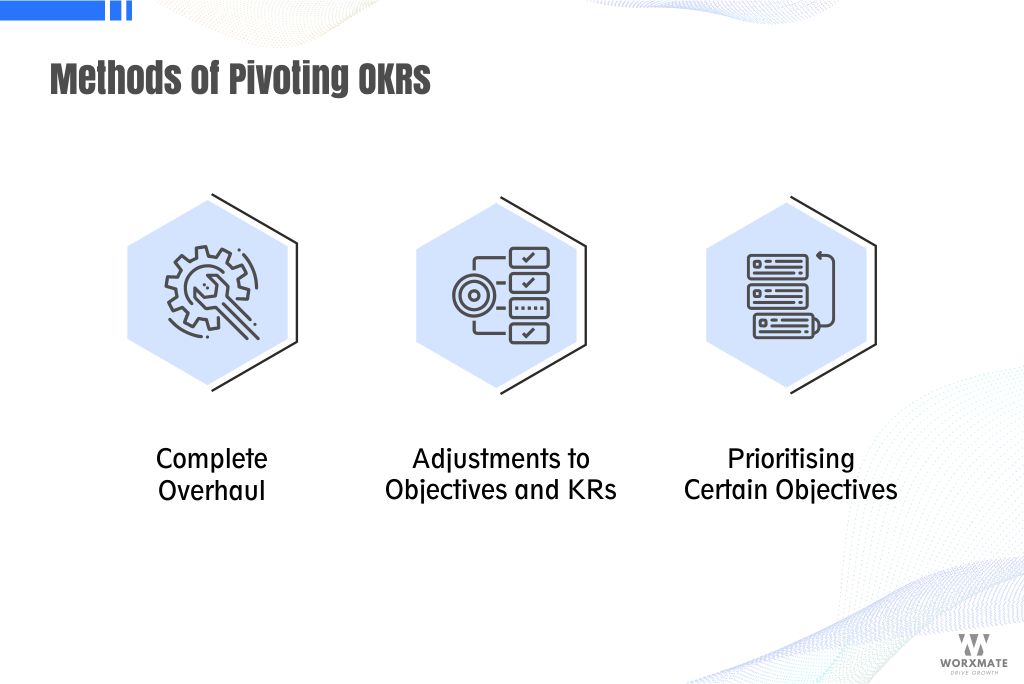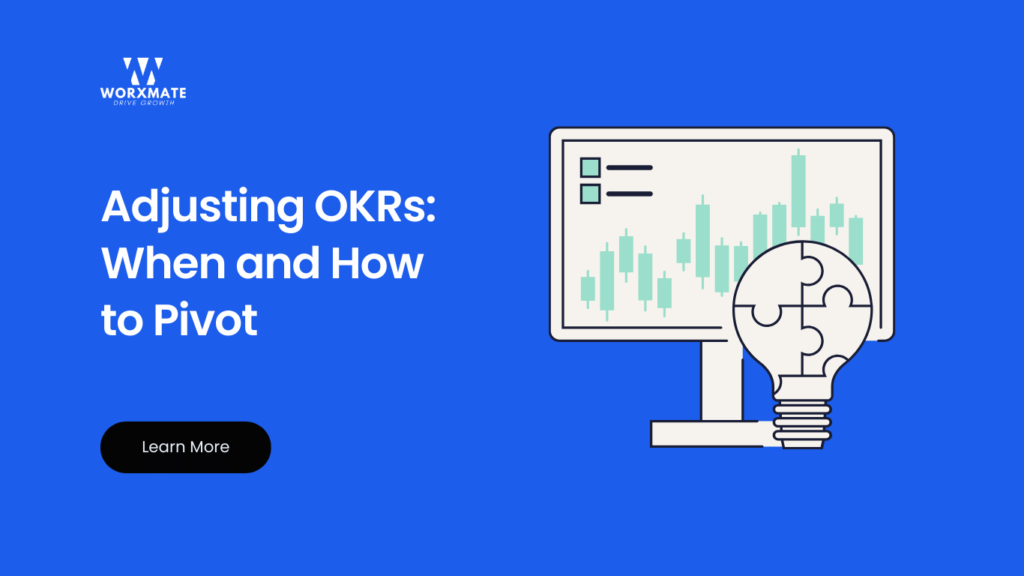Summary
Adjusting OKRs (Objectives and Key Results) is a strategic move that helps organizations stay aligned with shifting priorities, new insights, and external disruptions. By knowing when and how to pivot, companies can stay agile, boost innovation, and ensure efforts are focused on what matters most. Embracing OKR adjustments is not about failure—it’s about staying relevant and competitive.
OKRs have been adopted as a framework for goal setting and execution by countless businesses worldwide. Utilizing this framework to achieve goals and objectives is key to staying ahead of the competition.
But what happens when there is a shift, and the current plan no longer leads to success?
The Need for OKR Adjustment
It is essential to understand that priorities can shift, insights can deepen, and external factors can disrupt the status quo.
- Shifting Priorities : As businesses grows and markets change, what was once a top priority may no longer hold the same significance. Adjusting OKRs ensures that objectives remain aligned with current organizational focus areas.
- New Insights : The business landscape is dynamic, with new data and insights continually emerging. Adjusting OKRs to respond to fresh insights enables companies to capitalize on opportunities and effectively address emerging challenges.
- Adapting to External Factors : From changes in market conditions to shifts in customer preferences, external factors can significantly impact a company’s trajectory. By adjusting OKRs, organizations can respond proactively to external changes and maintain competitiveness.
- Signs of Ineffectiveness : Persistent failure to achieve Key Results or stagnation may indicate that OKRs need adjustment. Organizations can realign their efforts for greater impact by reassessing objectives and Key Results.
- Monitoring Progress : Regularly tracking progress against OKRs and soliciting feedback from stakeholders can provide valuable insights into the effectiveness of current objectives. Adjustments may be necessary to ensure that OKRs remain relevant and achievable.
- Market Dynamics : Keeping a finger on the pulse of market trends and industry shifts can help organizations anticipate changes and pivot their OKRs accordingly. This proactive approach enables companies to seize new opportunities and mitigate potential risks.
- Encouraging Innovation and Growth : Adjusting OKRs can foster a culture of innovation by allowing teams to explore new strategies and pursue ambitious goals. By embracing change, organizations can position themselves for continued growth and success.
Time for Adjustments
Knowing when to pivot OKRs is as vital as recognizing the need for adjustment. Several factors can influence the timing of OKR adjustments.
- Regular Review Intervals : Establishing regular review cycles, such as quarterly or annually, provides opportunities to assess the effectiveness of OKRs and make adjustments as needed. This proactive approach ensures that OKRs remain aligned with evolving priorities.
- Triggers : Significant events or milestones, such as launching a new product or a strategic partnership, may trigger reevaluating OKRs. These events often signal changes in priorities or market conditions that necessitate adjustments to OKRs.
- Monitoring Key Metrics : Tracking key performance indicators (KPIs) and other relevant metrics can provide valuable insights into the effectiveness of current OKRs. If KPIs consistently fall short or fail to reflect progress toward objectives, it may be time to pivot OKRs to set more realistic or impactful goals. It’s crucial to consider various factors that indicate whether the objectives are appropriately challenging and achievable.
Methods of Pivoting OKRs
When it comes to adjusting OKRs, there are several methods organizations can employ:
-
Complete or Partial Adjustments
- Organizations may opt for a complete overhaul of OKRs or make partial adjustments depending on the extent of the change required. While a complete overhaul may be necessary in some cases, partial adjustments can often suffice, allowing organizations to adapt to changing circumstances without starting from scratch.
-
Rewording Objectives and KRs
- Simple rewording of Objectives or Key Results can better reflect evolving priorities or clarify expectations. This approach allows organizations to maintain continuity while still adapting to changing needs.
-
Adding or Removing KRs
- Adding new Key Results or removing outdated ones can help refocus efforts on what matters most. This method allows organizations to realign their resources and prioritize initiatives that are most likely to drive success.
-
Prioritizing Objectives
- When resources are limited, or priorities shift rapidly, prioritizing objectives can help ensure that efforts are focused on the most critical areas.

The Impact
Before making OKR adjustments, it’s essential to consider the potential impact on various aspects of the organization.
-
Morale and Motivation
- Changes to OKRs can significantly impact team morale and motivation. It’s essential to communicate changes effectively, address any concerns or uncertainties, and provide support to ensure team members remain engaged and motivated.
-
Maintaining Alignment
- OKR adjustments should always be aligned with the overall direction and strategy of the organization. It’s crucial to ensure that changes to OKRs support broader organizational goals and priorities and do not undermine long-term objectives.
-
Communicating Changes Effectively
- Transparent and effective communication is essential when adjusting OKRs. Organizations should clearly communicate the reasons for adjustment, the expected outcomes, and any changes to expectations or priorities. Organizations can minimize confusion and disruption by keeping team members informed and involved and maintaining trust and confidence in the process.
Conclusion
Adjusting OKRs is not a sign of failure but rather a testament to an organization’s ability to adapt and thrive in a rapidly changing world. By recognizing the need for adjustment, knowing when to pivot, and engaging the team in the process, organizations can ensure that their OKRs remain relevant, achievable, and aligned with their long-term goals.
Embracing change as an opportunity for growth and improvement, organizations can navigate the pivot with precision and purpose, positioning themselves for continued success in the future.
If you’re looking for a smart, efficient way to manage and track your OKRs, Worxmate’s OKR Software can help streamline your processes and keep your teams aligned. Book a free demo today and discover how Worxmate can simplify your OKR journey and drive better results!




